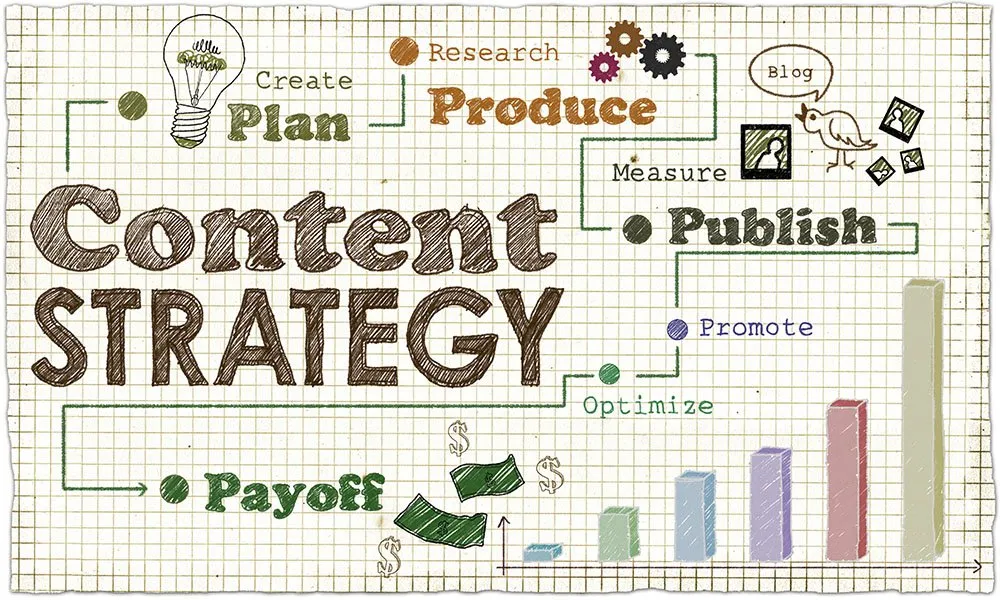Understanding the Intersection of Emotional Intelligence and Marketing
Emotional intelligence (EQ) is revolutionizing how brands connect with consumers. In a world where attention spans are shrinking, emotional stories that resonate with audiences are more critical than ever. This article explores how emotional intelligence can be harnessed by marketers to craft compelling, memorable stories.
Overview
Emotional intelligence enables marketers to understand and engage with their audience on a personal level. By using emotional stories, brands can create lasting emotional bonds that encourage consumer loyalty.
The Role of Stories
Stories have the unique ability to bypass logical reasoning and appeal directly to emotions. Crafting narratives that touch on emotions such as hope, fear, joy, and love enhances consumer engagement and fosters deeper connections.
Emotional Intelligence in Marketing
Emotional intelligence is the ability to perceive, control, and evaluate emotions. In marketing, EQ enables brands to understand their audience’s emotional states, driving more impactful and resonant campaigns.
What is Emotional Intelligence?
Emotional intelligence consists of five key elements:
- Self-awareness: Understanding your own emotions and how they affect your work.
- Self-regulation: The ability to manage your emotions in healthy ways.
- Motivation: Harnessing emotions to work toward goals.
- Empathy: Recognizing emotions in others and responding accordingly.
- Social skills: Managing relationships and fostering teamwork.
In marketing, EQ helps brands craft messages that resonate deeply, elevating customer satisfaction and trust.
The Science Behind Emotional Connection
Neuroscience shows that emotional experiences are processed differently than rational thoughts. While consumers might remember facts, they are more likely to remember how a brand made them feel. This emotional connection is key to driving consumer behavior and long-term loyalty.
The Core Elements of Emotional Intelligence for Marketers
For marketers, developing and applying emotional intelligence means understanding both their own emotions and their audience’s feelings to shape messages that matter.
Self-awareness
Self-awareness allows marketers to understand how their emotions influence storytelling. By recognizing personal biases and emotional triggers, marketers can ensure that their messages resonate authentically with their audience.
- Recognizing your emotional triggers
- Crafting messages that reflect personal insights
- Balancing empathy with business goals
Empathy
Empathy is at the heart of emotional marketing. Marketers who empathize with their audience’s needs can craft stories that reflect consumer struggles, desires, and aspirations, building a genuine connection.
- Understanding audience pain points
- Creating relatable, human stories
- Listening and interpreting consumer emotions

Self-regulation
Managing emotions effectively ensures that stories remain consistent and authentic. Marketers must balance emotional appeal with logical content, ensuring that messages do not manipulate or mislead consumers.
- Staying true to brand voice
- Ensuring emotional stories are grounded in authenticity
- Maintaining consistency in tone
Social Skills
Building relationships through storytelling fosters consumer trust and loyalty. Marketers with high social skills can use storytelling to engage customers, creating long-term connections that go beyond simple transactions.
- Building relationships with customers
- Enhancing engagement through emotional stories
- Developing community through storytelling
Crafting Stories That Stick: Key Strategies for Marketers
Stories that stick with consumers are those that provoke emotions, connect to their values, and stay relevant in their lives. Here’s how marketers can craft powerful, emotional narratives.
Creating Relatable Characters
Successful stories feature characters that mirror the audience’s experiences, struggles, and victories. These characters don’t just appeal to the intellect; they stir deep, personal emotions.
- Designing characters that reflect real-world challenges
- Giving characters emotions that mirror audience sentiments
- Ensuring relatability for authenticity
Emotionally Engaging Plots
Stories with emotional highs and lows keep audiences hooked. Incorporating universal themes such as love, fear, hope, and justice makes your stories resonate on a deeper level.
- Creating narratives that evoke strong emotional reactions
- Developing plots with impactful conflicts and resolutions
- Addressing universal human themes
The Power of Conflict and Resolution
Great stories include conflict—whether internal or external. This conflict heightens emotional engagement. When the story resolves, consumers feel satisfaction and a connection with the brand’s message.
- Using challenges to draw emotional engagement
- Presenting the brand as a solution to problems
- Offering hope and resolution to the audience
The Role of Authenticity
Consumers crave authenticity. When brands tell emotional stories, they must be genuine. Fake or overly polished messages can alienate consumers, while authenticity builds trust.
- Prioritizing transparency and honesty
- Avoiding exaggeration or manipulation in messaging
- Showcasing brand values through stories
The Impact of Emotional Storytelling on Consumer Behavior
When done correctly, emotional storytelling does more than capture attention—it drives consumer actions and shapes long-term loyalty.
Emotional Triggers and Purchase Decisions
Emotional stories influence purchasing decisions. Brands that evoke strong emotions create a sense of urgency and desire, prompting consumers to act quickly.
- Using emotional triggers to motivate purchases
- Connecting with consumers on an emotional level
- Showing consumers how the product meets their emotional needs
Building Brand Loyalty Through Emotional Bonds
Storytelling helps build trust. Consumers who feel emotionally connected to a brand are more likely to become repeat buyers and even brand advocates.
- Creating long-lasting emotional bonds with consumers
- Building brand loyalty through consistent emotional storytelling
- Using stories to transform customers into advocates
Increasing Brand Recall
Emotional stories help brands stand out. When a consumer feels an emotional connection, they are more likely to remember the brand long after the interaction.
- Boosting brand recall through emotional connection
- Ensuring your brand story stays memorable
- Crafting stories that resonate across time
Case Studies: Emotional Intelligence in Action
Real-world examples of brands using emotional intelligence to build successful, memorable campaigns.
Apple: Creating an Emotional Experience Through Storytelling
Apple excels at creating emotional connections through its marketing campaigns. By humanizing its technology, Apple makes every consumer feel like they are a part of a global movement.
- Using simplicity and elegance in storytelling
- Highlighting innovation in relatable ways
- Evoking feelings of empowerment and belonging
Nike: Using Stories of Triumph and Resilience
Nike’s campaigns often feature athletes overcoming challenges, empowering viewers with stories of resilience and strength. These stories reflect the brand’s core values of ambition and perseverance.
- Creating emotional narratives around personal growth
- Highlighting empowerment and achievement
- Connecting with consumers on a personal level
Coca-Cola: The Emotion of Togetherness and Happiness
Coca-Cola has successfully used stories centered around happiness, togetherness, and shared moments to foster a sense of community.
- Using seasonal campaigns to promote joy
- Telling stories of celebration and unity
- Highlighting consumer experiences in a feel-good light
The Role of Storytelling Across Marketing Channels
Emotional storytelling isn’t confined to a single medium. Marketers must adapt their narratives across channels to ensure consistency and reach.
Social Media
Platforms like Instagram, TikTok, and Facebook are ideal for sharing emotionally engaging content. Marketers can create micro-stories that connect with users on a personal level.
- Utilizing stories and posts to enhance engagement
- Sharing behind-the-scenes content to humanize the brand
- Encouraging user-generated content to build community
Email Marketing
Email campaigns benefit from personalized, emotionally resonant stories that grab attention and encourage conversions.
- Crafting compelling subject lines and body copy
- Using storytelling to make emails more engaging
- Segmenting email lists based on emotional triggers
Content Marketing
Blogs, podcasts, and videos offer opportunities to engage consumers emotionally over longer periods. Using storytelling in content marketing helps brands stay top-of-mind.
- Leveraging stories in long-form content
- Using podcasts and videos to emotionally engage listeners
- Creating evergreen content with lasting emotional impact
Measuring the Effectiveness of Emotional Storytelling
To gauge the success of emotional storytelling, marketers need to measure consumer response through quantitative and qualitative methods.
Key Performance Indicators (KPIs)
Metrics such as engagement rates, conversion rates, and customer sentiment help determine whether emotional storytelling is resonating with audiences.
- Tracking engagement and interaction rates
- Measuring emotional resonance through sentiment analysis
- Using conversion data to gauge storytelling effectiveness
Qualitative Feedback
Beyond numbers, feedback from customers provides insights into whether the emotional story connected with them on a deeper level.
- Conducting surveys and focus groups
- Analyzing social media feedback
- Using customer reviews to assess emotional impact
Ethical Considerations in Emotional Storytelling
It’s essential for brands to consider ethics when crafting emotional stories. Manipulating emotions can backfire if consumers feel exploited.
Avoiding Manipulation
Emotional storytelling should not cross the line into manipulation. Marketers must ensure their stories are grounded in truth and authenticity.
- Fostering trust by being honest and transparent
- Using emotional appeal responsibly
- Respecting consumer intelligence and autonomy
The Responsibility of Brands
Brands hold a responsibility to ensure their emotional storytelling doesn’t exploit vulnerable consumers. Ethical storytelling creates meaningful connections without manipulation.
- Prioritizing honesty and transparency in all messaging
- Avoiding harmful stereotypes or exploitative narratives
- Ensuring brand stories reflect ethical values
Future Trends in Emotional Storytelling
The future of emotional storytelling is bright, with emerging technologies offering new ways to connect with consumers on an emotional level.
Augmented Reality (AR) and Virtual Reality (VR)
Emerging technologies like AR and VR offer exciting new ways to tell emotional stories in an immersive format. These technologies will allow consumers to experience emotional stories in real-time.
- Creating immersive emotional experiences through AR and VR
- Blurring the lines between reality and storytelling
- Engaging consumers through interactive emotional narratives
AI and Emotional Storytelling
AI will continue to evolve in emotional storytelling by personalizing narratives based on individual preferences and emotional responses.
- Using AI to craft personalized emotional stories
- Leveraging data to predict and influence emotional reactions
- Enhancing storytelling experiences through AI-driven content
Conclusion: The Future of Emotional Intelligence in Marketing
As consumer expectations continue to rise, emotional intelligence will become even more vital in marketing. Crafting stories that connect emotionally with audiences will remain essential to building strong, long-lasting brand loyalty.













Comments